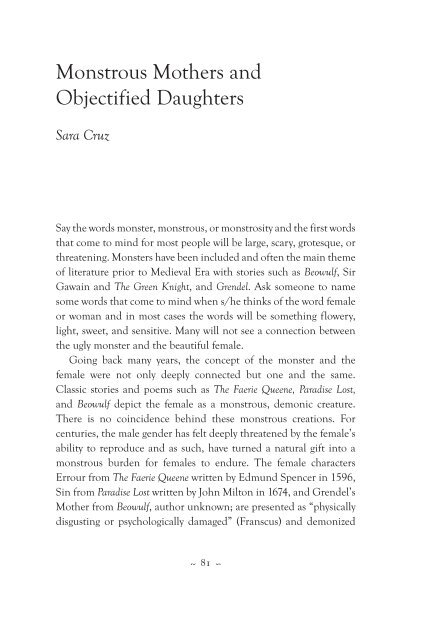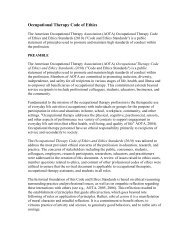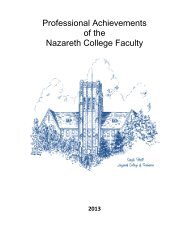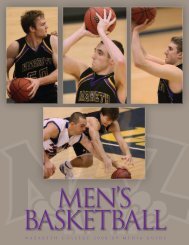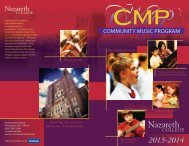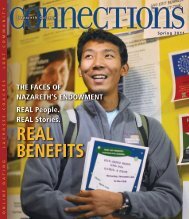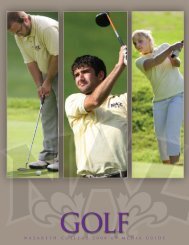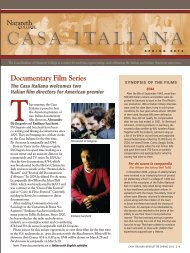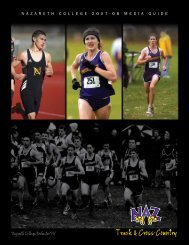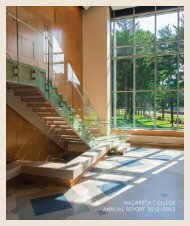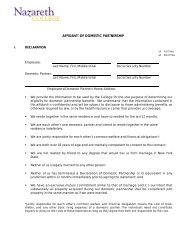Afternoon of Alterity - Nazareth College
Afternoon of Alterity - Nazareth College
Afternoon of Alterity - Nazareth College
You also want an ePaper? Increase the reach of your titles
YUMPU automatically turns print PDFs into web optimized ePapers that Google loves.
Monstrous Mothers andObjectified DaughtersSara CruzSay the words monster, monstrous, or monstrosity and the first wordsthat come to mind for most people will be large, scary, grotesque, orthreatening. Monsters have been included and <strong>of</strong>ten the main theme<strong>of</strong> literature prior to Medieval Era with stories such as Beowulf, SirGawain and The Green Knight, and Grendel. Ask someone to namesome words that come to mind when s/he thinks <strong>of</strong> the word femaleor woman and in most cases the words will be something flowery,light, sweet, and sensitive. Many will not see a connection betweenthe ugly monster and the beautiful female.Going back many years, the concept <strong>of</strong> the monster and thefemale were not only deeply connected but one and the same.Classic stories and poems such as The Faerie Queene, Paradise Lost,and Beowulf depict the female as a monstrous, demonic creature.There is no coincidence behind these monstrous creations. Forcenturies, the male gender has felt deeply threatened by the female’sability to reproduce and as such, have turned a natural gift into amonstrous burden for females to endure. The female charactersErrour from The Faerie Queene written by Edmund Spencer in 1596,Sin from Paradise Lost written by John Milton in 1674, and Grendel’sMother from Beowulf, author unknown; are presented as “physicallydisgusting or psychologically damaged” (Franscus) and demonized 81


